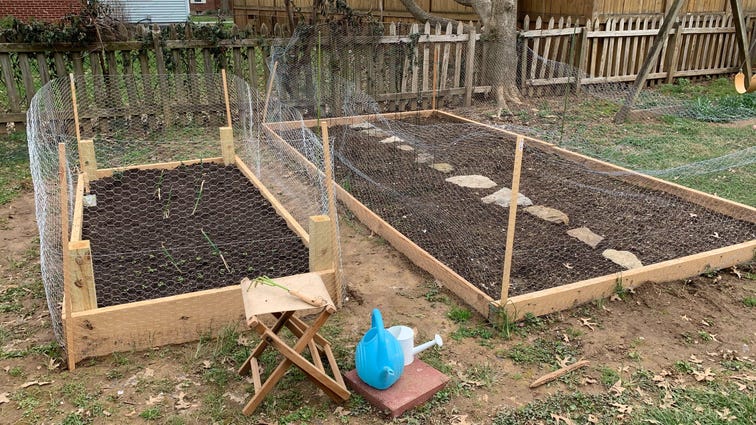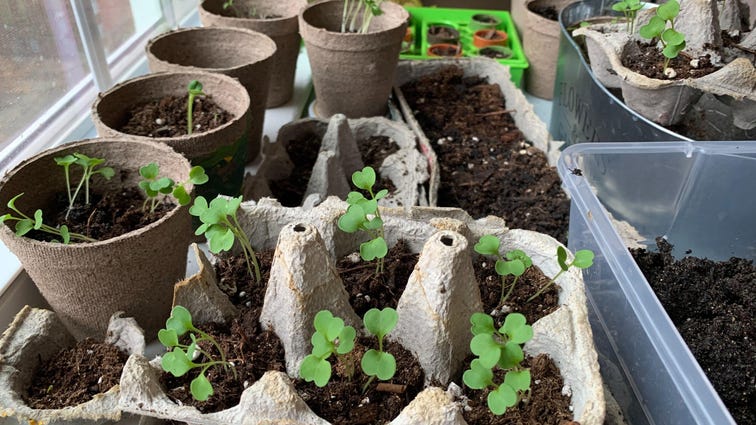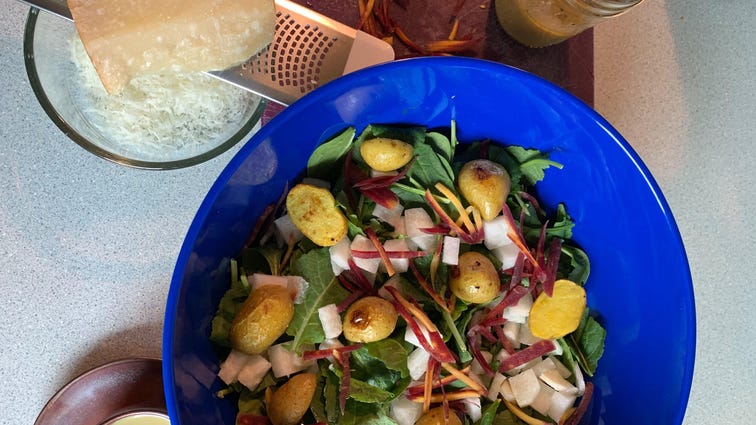Two rows of arugula take root.
David Priest/CNET
There are a lot of reasons to stress right now, to inflation for international affairs and the rise of fraudulent SMS. Gardening at home – not only to stay sane, but also to sustain yourself in an uncertain future – is a perfect way to turn anxiety into calm productivity. Growing your own vegetables is practical in class supply chain disruptions leave the grocery store shelves empty, and you might even to save money.
Fortunately, starting a garden is simple. Follow the steps below and you will be harvesting vegetables by summer. In the meantime, here are some other money-saving tips around the house, cash back credit cards to fight grocery inflationand how meal kits and groceries actually compare on the price.
Read more: 11 Plant Delivery Services and Garden Subscriptions Compared: Bloomscape, The Sill, My Garden Box and More
Step 1: Test your soil

David Priest/CNET
Before you attempt to grow anything, you’ll want to check that your soil is healthy. First, dig up the ground a bit and check for worms and other insects. The more bugs, the better. You also want the soil to be workable – if it has a high clay content, it might make it harder for some plants to grow.
Next, you want to test soil pH: You don’t want your soil to be too acidic or alkaline. You can get these tests for a few dollars at a local garden center or order them online. Then you can respond to what you find, by adding potting soil or fertilizer.
Step 2: Choose your crops wisely
The first step in choosing your crops is to choose your favorite fruits and vegetables. Then you can check which of them grow best in your area and which grow best together. Herbs and some leafy greens like arugula are easy crops to start indoors (we even wrote a separate guide for that) and then transfer outdoors, which can help gardeners in warmer climates. cold. Tomatoes, cucumbers and carrots are also strong starter crops, and they all grow quickly – good for those who want gratification earlier. Once you know what you want to grow, you can order seeds online or search for garden centers in your area.
Step 3: Build your bed

David Priest/CNET
Building a good gardening bed is the most important part of the process, and it can make your life easier later on. If your soil is healthy and you don’t want to spend a lot of money, you can plant your crops in the ground, surround the plot with wire netting to keep pests away, and you’re done. If you have the time, the tools, and the money, a raised bed is the way to go.
A raised bed is between 1 and 5 feet above the level of your garden. You fill it with soil, various fertilizers (just google what your vegetables like best), and rocks to help create the perfect conditions for your produce to take root. A raised bed also helps keep weeds and pests to a minimum. You can buy raised bed kits, or you can buy planks and build your own – but either way, buy wooden stakes and chicken wire to keep rabbits and other nibblers away.
Step 4: Plant your crops

David Priest/CNET
Once your bed is built, look at the requirements on your seed packets or online for each crop. Some only need a few inches of space, while others will take up a foot or more. Some need pressed soil on top and others germinate best in loose soil. If you are growing snow peas, tomatoes, or other climbing vegetables, you may need a pole for the vine to climb. You can even start some indoors on a south-facing windowsill before transferring them to the garden. Use a tape measure, plant accordingly and water.
Step 5: Be patient
Gardening is in many ways an act of faith. You put seeds in the ground and just have to believe that they germinate and grow as they should. If sprouts don’t appear within the time window advertised on seed packets, don’t worry. Sometimes, if the weather is colder than ideal, the seeds will take a little longer to establish. Give them time, water them appropriately, and wait.
Step 6: Keep your garden healthy

David Priest/CNET
Once your sprouts get their start, keep them healthy. You may need to thin out sprouts that grow too close together. But as delicate as they look, these shoots are hardy. Replant them where they will have room to grow. Garden maintenance also means using nets or vegetable cages if necessary, watering properly and weeding religiously. The more you weed, the less weeds will grow and the healthier your vegetables will be. So go out early in the morning or after the rain when the ground is wet and get your hands dirty.
Step 7: Harvest

David Priest/CNET
After a short time – 40 to 90 days or more depending on the crop – you should start producing yields from your garden. Keep track of when you planted so you can monitor the development of your vegetables, then harvest them when they’re ripe. Some plants, like spinach, can provide several yields before going to seed, as long as you leave the young leaves intact. Others will give a single yield. Save the seeds of the vegetables you harvest, then enjoy them: cook, bake, pot, and gift the fruits (and vegetables) of your labor.
Gardening takes time, patience and discipline, but it’s also the perfect way to de-stress. The growing season is already underway for some vegetables, so do your research and move quickly if you’re considering building a plot. And if you have any other tips for fellow Victory Gardeners, tweet us or share them in the comments below.
Read more: Best places to buy plants online for 2022

